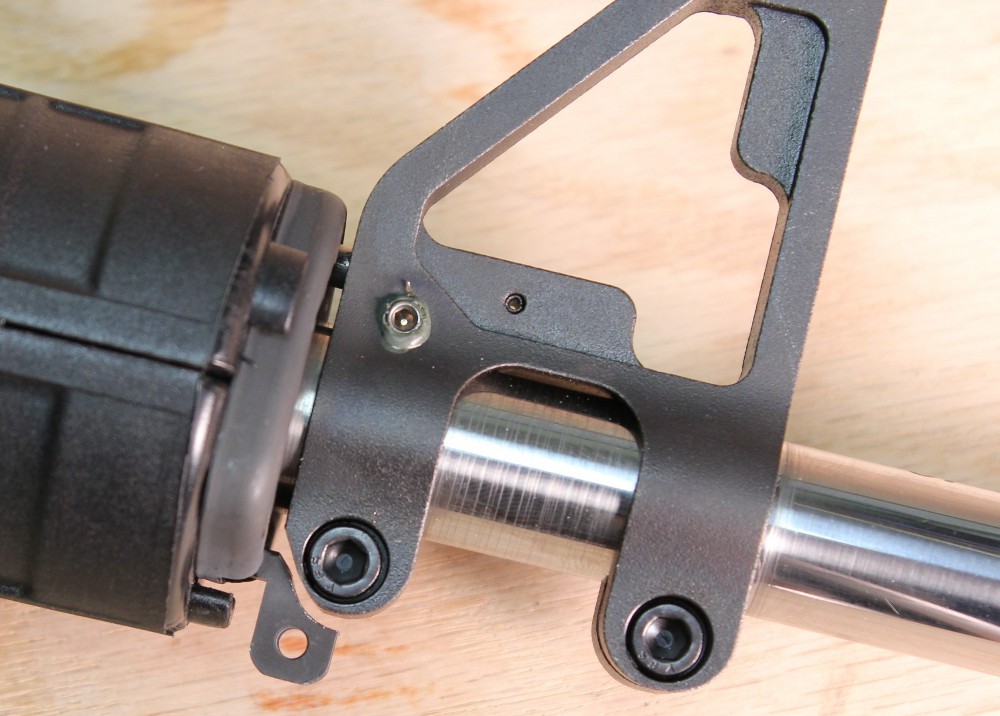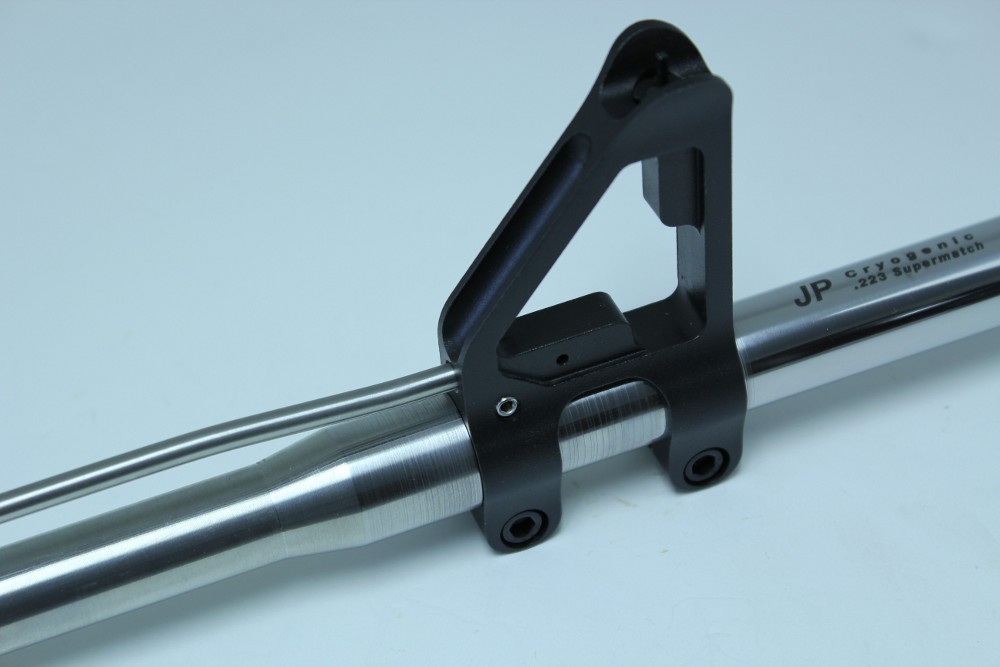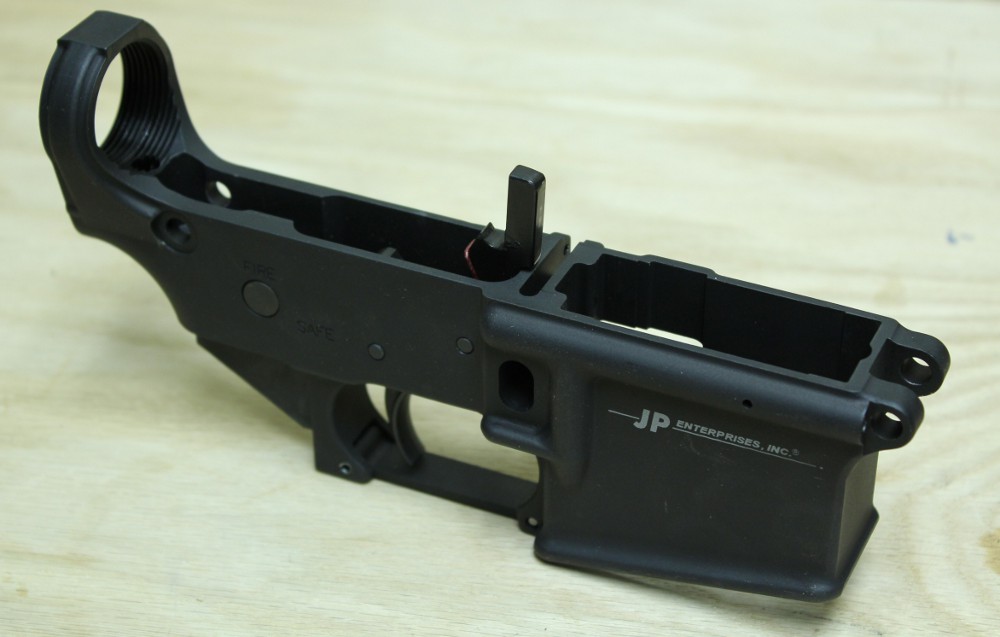The author builds a National Match AR from parts to be used in CMP competition.
A year or two ago I decided to try some three-gunning. For those unfamiliar with three-gun competition, it is essentially a type of match where the competitor uses a rifle, pistol, and shotgun, in multiple and combined stages, and operates under time and scoring constraints, plus whatever the sick, sick planners of the stages decide to insert into the course.
It’s a lot of fun, and can be very challenging, however it also has a very high round count, as in hundreds and hundreds, and requires three guns, which can be pretty inexpensive, but can also be very not inexpensive. I decided that I wasn’t quite ready for that, but I still wanted to shoot ARs in some sort of competition setting.

What I settled on was to shoot CMP sanctioned matches using the General Service Rifle rules. Now, I’m not going to go into the details of this type of match, simply for lack of room, but I will relay a couple of hints. In a nutshell, you need a 20-inch AR-15 with a carry handle. On the exterior it must remain orthodox in appearance, with the aforementioned 20-inch barrel, standard handguard, carry handle, standard military sights, standard pistol grip and stock, etc.
There are minor modifications to the exterior allowed, such as a non-threaded barrel with no muzzle attachment, a detachable carry handle, a stainless steel higher quality barrel, a free float tube that uses the standard handguard halves, several different minor but useful sight modifications (such as a corrective lens or finer adjustments), and the ability to use pretty much any color you want for the stocks if you want to be something of an individual. There are also a few must-have criteria that will be mentioned in italics as we progress.
Most large AR manufacturers such as Colt, Rock River Arms, and DPMS offer purpose-built models for this type of competition and generally they are quite good at it. However, I am loathe to simply buy a complete ready-to-use product, so I decided to go a little further and build my own from parts.
Fortunately, Brownells was able to offer most of what I needed. With all the insanity of the AR market with its super special aftermarket stocks, pistol grips, and doo-dads of whatever persuasion there is still the good old inexpensive A2 stock and pistol grip, which are required by the rules. These came from Brownells with no hassle, and included the receiver extension tube (buffer tube for you non-purists), buffer and spring. Truthfully, I can’t stand the A2 pistol grip, mostly because of the finger groove on the front of it. The little projection is entirely in the wrong place for my small hands, and ironically the grip itself feels too skinny, probably because I’m used to using MagPul pistol grips. Well that’s tough since my choices are A2 or A1 grips, and since the rest of the rifle is A2 configured, I reckoned that putting an A1 grip (without the finger rest) would just look stupid.
Also from Brownells was the NM free-float tube made by Rock River. Most shooters can sling up a rifle so tight on a front-sight-mounted sling that it affects the point of impact. And probably no shooter can sling up in a sufficiently repeatable fashion to affect that point of impact the same exact way twice. So the handguard, in addition to being free-floating, also has a sling swivel on the front/bottom of the inner tube, thus transplanting the sling-up stress to the tube rather than the barrel. This makes this tube much superior to the standard handguard for accuracy, but also makes it substantially heavier, since it’s made of steel. Most competitors don’t mind that weight since it helps to keep the entire rifle more stabilized.

Barrel
The heart of a rifle is its barrel. Having had great experience with the barrel kit I purchased for a three-gun rifle, I again tried a barrel kit from JP Enterprises. I ordered one of their 20-inch barrels, modified. As standard, it takes a .936” gas block over a .875” barrel. I had them turn the barrel down to take a .750” gas block, thus the same required contour past the handguards as a standard M-16/AR-15 20-inch barrel. To this barrel was attached one of their A2 front sight posts, called a JPGS-2FS. It clamps on, rather than pinning, similarly to the windage adjustable gas blocks the larger companies use, has an adjustable gas system, and closely duplicates the standard front sight tower. This set screw allows the shooter to tune the gas system to any particular ammo, yet the gas system remains fully functional, as rules require.
The potential downside is the resulting lightness of the barrel, which kind of bucks the current in a sport where heavy contoured (behind the gas block) barrels are the norm. However, upon completion of this project I found that the rifle’s balance was absolutely perfect in my eyes and was very easy to hold for extended periods gazing through the sights.
The front sight post was also a match type sight procured from Brownells, thinner in cross section than the standard front sight post. An Armalite National Match rear sight from Brownells replaced the standard sight on the carry handle and was the most annoying thing to install. Don’t lose the ball bearings, and be sure to use your third hand, since you will need it.
To spread things around a bit, I ordered the removable carry handle from Del-Ton. Why? It was a quality part (there are a lot of crappy carry handles out there) for a very reasonable price, and I have always liked Del-Ton’s customer service, prices, and item selection, which make it an obvious place to find things I need.
I was forced to make a modification to the handguard and front sight/gas block, which is befitting a gunsmith building a rifle. I milled off a radius from the top corner of the swivel loop on the handguard, and ground off a small amount from the back of the rear gas block clamp so they could fit together on the barrel without interfering with one another. The accompanying image shows where the two parts were affected.

Lower
Real quickly, when I was ordering the barrel kit, JP’s “modular” trigger caught my eye. Not a modular trigger at all in the traditional sense, it is simply JP’s standard single-stage match trigger installed in a stripped lower receiver, for $350, and correctly called a “Lower With Trigger.” Frankly, I haven’t met a modular trigger that I really liked; they all have their little idiosyncrasies and while good, can’t ever seem to quite stand up to a dedicated non-modular type standard match trigger.
So, I thought that $350 was quite a decent deal for a stripped lower with a match trigger kit, set up for the 4.5 pound minimum pull weight. I removed the anti-walk pins to replace them with standard trigger and hammer pins. Onto this lower receiver went a lower parts kit that I had sitting around and the stock and pistol grip from Brownells. I also dug up an old standard aluminum 20-round magazine (that I know still works well) that probably went to Vietnam and back to feed the rifle. Standard 30 round mags are okay too, but shooters often monopod on them during prone strings of fire.
Testing

While I need to get outside more and practice, it was a non-problem for me to take a quick trip to the indoor 50-yard range to break this rifle in. The best groups I got were with American Eagle 55-grain FMJ ammo, both under ½ an inch in this setting. Theoretically, on a calm day at 100 yards I should get under an inch, and for my first CMP rifle, I’m totally satisfied with that result. Felt recoil was ridiculously light, due to the adjustable gas system and the low-mass bolt carrier that I also purchased from JP. Most felt recoil in an AR is from the mass of the buffer and carrier group hitting the back of the stock. By lightening that load somewhat, and reducing the tuning, the gas needed to operate the rifle with the adjustable gas block, most of that felt recoil can be eliminated. Most rifles are over gassed for reliability, but adjustable gas blocks allow you to tap off only what you need, not what the manufacturer thinks you may someday need on the surface of Mars. This should allow me to get the sights back on target faster during the rapid-fire stages of the matches, hopefully giving a slight boost to performance.
Conclusion
My goal was to build a gun for the National Matches and I did so. Yes it cost me more in the end than buying one off the shelf, but I got a rifle that was mine, not someone else’s. And since the CMP rules allow detachable carry handles, I can take my carry handle off and use the rifle with an optic for some other task, such as hunting, or another shooting sport, as I see fit, and then simply replace the carry handle for my next CMP match. I am a believer in versatility and this rifle meets that description.
By spending a little extra on premium parts, you can still make it out the door under $1500 (less than your average piston operated AR carbine) and you should have a demonstrably better rifle, personalized, than a mass-produced off-the-shelf version of the same thing.
Since people are probably getting sick of me writing about ARs (even though that market is hot) we will next be moving back into some traditional detailed gunsmithing for the next few months. Till then, find a sport and shoot it.
This article appeared in the July 4, 2011 issue of Gun Digest the Magazine.

Next Step: Get your FREE Printable Target Pack
Enhance your shooting precision with our 62 MOA Targets, perfect for rifles and handguns. Crafted in collaboration with Storm Tactical for accuracy and versatility.
Subscribe to the Gun Digest email newsletter and get your downloadable target pack sent straight to your inbox. Stay updated with the latest firearms info in the industry.


![Best Concealed Carry Guns In 2025 [Field Tested] Wilson Combat EDC X9S 1](https://gundigest.com/wp-content/uploads/Wilson-Combat-EDC-X9S-1-324x160.jpg)


![Best 9mm Carbine: Affordable PCCs [Tested] Ruger Carbine Shooting](https://gundigest.com/wp-content/uploads/Ruger-Carbine-Shooting-100x70.jpg)
![Best AR-15: Top Options Available Today [Field Tested] Harrington and Richardson PSA XM177E2 feature](https://gundigest.com/wp-content/uploads/Harrington-and-Richardson-PSA-XM177E2-feature-100x70.jpg)

I’m in the process of not only building a 7.62x39r AR, I’m also building a lower for my brother (active duty Navy), so he gets as much practice from a reliable 5.56 NATO chambered weapon as possible before he returns Southwest Asia. I think the book would make some great reading material for him on deployment.
Planning on building a NM AR-15. This book would be great to have.
This is a great build. I had this idea last year, but was told by the rules committee at the CMP that the JP Low Mass bolt and the JP Adjustable Gas Block front sight would not be legal for CMP competition. Please clarify.
This may be the case. When this article was written, I had it on reasonable authority that these items would be legal, as the rules indicate, generally, that internal modifications and parts are acceptable (low mass carrier, trigger, etc.), and the gas block remains very close to original appearance. Furthermore the gas system still remains fully operational. However, perhaps something new has developed…
As stated elsewhere, I do not own a modern sporting rifle (aka AR-15) at this time. I think that the book “Gunsmithing the AR-15” would be a great reference book for when I do own one (notice I said when not if).